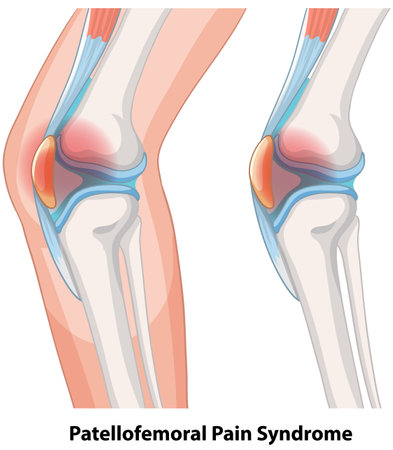Introduction: The Importance of Effective Shoulder Rehabilitation in the UK
Shoulder injuries and conditions are a significant concern across the UK, affecting people of all ages and backgrounds. Whether due to sports injuries, workplace incidents, or age-related degeneration, effective shoulder rehabilitation is vital for restoring function, alleviating pain, and supporting individuals to regain independence. Comprehensive rehabilitation does not only improve physical outcomes; it also plays a crucial role in enhancing overall quality of life. For many patients, successful rehabilitation means being able to return to work promptly, resume daily activities, and participate fully in family and community life. Furthermore, efficient shoulder rehabilitation reduces the burden on the NHS by minimising repeat appointments, lowering reliance on pain medications, and preventing long-term disability. Given these wide-ranging impacts, understanding and addressing the barriers to effective shoulder rehabilitation is essential for both individuals and the broader health system in the UK.
2. Common Barriers Faced by Patients
Effective shoulder rehabilitation in the UK can be hindered by several patient-level challenges. Understanding these barriers is crucial to developing strategies that support individuals throughout their recovery journey. The following are some of the most frequently encountered obstacles:
Lack of Knowledge and Awareness
Many patients are unaware of the importance of adhering to prescribed rehabilitation exercises, or they may not fully understand their condition and the recovery process. This knowledge gap can result in poor engagement, missed appointments, or incorrect exercise techniques, ultimately delaying progress.
Motivation and Adherence Issues
Maintaining motivation over weeks or months of rehabilitation can be difficult. Daily routines, work commitments, or general fatigue can lead patients to deprioritise their exercises. Inconsistent adherence is a well-documented factor affecting recovery outcomes.
Fear of Movement (Kinesiophobia)
A significant number of patients experience fear of movement due to concerns about pain or causing further injury. This psychological barrier can discourage active participation in physiotherapy, impeding full functional recovery.
Accessibility and Logistical Challenges
The UKs healthcare landscape presents unique accessibility issues, including lengthy NHS waiting lists and limited availability of specialist services in rural areas. Private sector care offers more immediate access but may not be affordable for everyone.
| Barrier | NHS Sector | Private Sector |
|---|---|---|
| Appointment Availability | Often delayed due to high demand | Generally quicker access but at a cost |
| Geographical Access | Rural areas face longer travel times | More clinics in urban areas; limited rural coverage |
| Continuity of Care | May see different therapists each visit | Greater flexibility for ongoing care with one provider |
| Cost to Patient | No direct charge but indirect costs (travel/time off work) | Direct out-of-pocket expenses; insurance limitations |
Financial Constraints
While NHS services are free at the point of use, indirect costs such as travel, parking, and time off work can create financial strain for patients. For those seeking private treatment, fees may present a significant obstacle, especially when extended courses of therapy are required.
A Patient-Centred Perspective
The interplay between these barriers means that tailored support and flexible solutions are essential to optimise rehabilitation outcomes. Recognising each patients individual circumstances enables clinicians to address challenges proactively and compassionately.

3. Systemic and Institutional Challenges
One of the most significant barriers to effective shoulder rehabilitation in the UK lies within systemic and institutional frameworks. Prolonged waiting times for initial physiotherapy appointments or specialist consultations are a well-documented issue across many NHS trusts, often leading to delayed diagnoses and treatment initiation. These delays can exacerbate shoulder conditions, making rehabilitation more challenging and potentially impacting long-term outcomes.
Referral pathways can also be complex and inconsistent, varying significantly between different regions. Some patients may find themselves navigating multiple tiers of primary and secondary care before receiving appropriate interventions. This complexity can cause confusion and frustration, and may result in some individuals disengaging from their rehabilitation journey altogether.
The limited availability of specialist care, such as musculoskeletal physiotherapists or orthopaedic consultants with expertise in shoulder injuries, further compounds these challenges. Rural areas or less affluent communities may face particular difficulties, with fewer resources allocated to specialist services compared to urban centres. This often leads to notable disparities between regions or socioeconomic groups, where individuals in under-resourced areas experience poorer access to timely and comprehensive care.
To overcome these systemic obstacles, it is essential to advocate for improved funding and resource allocation aimed at reducing waiting lists and expanding specialist training opportunities. Streamlining referral processes—such as introducing direct-access physiotherapy or digital triage systems—can also help ensure patients receive the right care at the right time. Finally, targeted efforts are needed to address regional inequalities, ensuring that all individuals, regardless of location or background, have equitable access to high-quality shoulder rehabilitation services.
4. Cultural Attitudes and Communication
British cultural attitudes towards health and rehabilitation significantly influence the effectiveness of shoulder recovery programmes. Many patients in the UK may adopt a “stiff upper lip” approach, often underreporting pain or hesitating to seek help, which can delay intervention and hinder progress. Furthermore, there are varying perceptions about physiotherapy; some individuals see it as essential, while others view it with scepticism or misunderstand its benefits.
Understanding British Perspectives on Health and Pain
| Attitude | Potential Impact on Rehabilitation |
|---|---|
| Reluctance to Express Pain | Pain may be underestimated by clinicians, leading to insufficient support or adaptation of exercises. |
| Scepticism Towards Physiotherapy | Patients may not fully engage with prescribed exercises or may discontinue treatment early. |
| Valuing Independence | Some may avoid asking for help or attending group sessions, missing out on supportive environments. |
The Role of Effective Communication
Clear, empathetic communication between healthcare professionals and patients is crucial. Open dialogue helps uncover concerns, corrects misconceptions about physiotherapy, and ensures that patients’ values and preferences are respected. Shared decision-making empowers patients, increases adherence to rehabilitation protocols, and improves overall outcomes.
Key Elements of Patient-Centred Communication
- Active listening to understand patient concerns
- Using plain English to explain medical terms and procedures
- Encouraging questions to clarify uncertainties
- Collaboratively setting realistic goals
Strategies to Overcome Cultural Barriers
- Provide tailored education addressing common myths about shoulder rehabilitation
- Create a supportive environment where patients feel comfortable discussing pain and setbacks
- Promote the benefits of physiotherapy through patient stories and peer support groups
Cultivating trust through culturally sensitive communication is fundamental in overcoming these barriers. By recognising and respecting British cultural nuances, healthcare teams can foster stronger therapeutic relationships and ultimately enhance the success of shoulder rehabilitation across the UK.
5. Technological and Digital Divide
The increasing integration of technology into shoulder rehabilitation offers significant benefits, yet it also brings notable challenges—especially within the diverse populations of the UK. As remote rehabilitation tools and digital platforms become more common in physiotherapy practices, disparities in digital literacy and access to reliable internet or devices can create barriers for many patients. Older adults, individuals in rural or economically disadvantaged areas, and those less familiar with digital tools may find it difficult to engage fully with online resources or virtual appointments.
Addressing these challenges requires a multifaceted approach. Healthcare providers should assess each patient’s comfort and ability to use digital technologies before recommending remote rehab options. Providing clear, step-by-step guidance for accessing virtual consultations or online exercise programmes can significantly improve patient confidence and adherence. Where possible, clinics could offer hands-on tutorials or printed guides as supplementary support.
Moreover, collaborating with community organisations—such as local libraries, community centres, or voluntary groups—can help bridge the gap by providing free internet access, loaned devices, or basic IT training. For patients who are unable to benefit from digital solutions due to lack of resources, maintaining flexible service delivery (including telephone follow-ups or home visits) ensures that no one is left behind in their rehabilitation journey.
By acknowledging and proactively addressing the technological and digital divide, healthcare professionals across the UK can deliver more equitable and effective shoulder rehabilitation services tailored to the needs of every individual.
6. Strategies to Overcome Barriers
Addressing the barriers to effective shoulder rehabilitation in the UK requires a collaborative and innovative approach from both clinicians and policymakers. Below, we present practical strategies that can help improve patient outcomes and streamline care delivery.
Patient Education and Empowerment
Empowering patients through tailored education about their condition, treatment options, and self-management techniques is crucial. Clear communication using accessible language, visual aids, and culturally relevant materials can enhance understanding and encourage active participation in rehabilitation programmes.
Multidisciplinary Approaches
Incorporating physiotherapists, occupational therapists, pain specialists, GPs, and mental health professionals fosters a holistic approach to care. Regular multidisciplinary team meetings facilitate better coordination, ensuring patients receive comprehensive support throughout their recovery journey.
Engagement Tools
Utilising goal-setting techniques, motivational interviewing, and feedback tools can boost patient engagement. Digital apps or paper-based diaries that track progress help maintain motivation, while reminders for appointments or exercises increase adherence to rehabilitation plans.
Community Resources
Signposting patients to local community centres, support groups, or exercise classes broadens access to resources beyond the NHS. Partnering with charities such as Arthritis Action or Versus Arthritis may provide additional guidance and peer support for individuals managing chronic shoulder conditions.
Equity-Focused Initiatives
Tackling disparities in access by offering translation services, transport assistance, or flexible appointment times ensures all patients—regardless of background—can benefit from quality rehabilitation. Policy efforts should prioritise funding for underserved communities and invest in outreach programmes targeting vulnerable populations.
Digital Support Solutions
The integration of tele-rehabilitation platforms and virtual consultations expands reach for those unable to attend in-person sessions. Online exercise libraries, instructional videos developed by NHS trusts, and secure messaging with clinicians allow ongoing support between appointments.
Collaboration for Sustainable Change
Sustained improvement relies on continued collaboration among healthcare providers, commissioners, patient representatives, and policymakers. By implementing these strategies at both practice and system levels, the UK can move closer to equitable, effective shoulder rehabilitation for all.
7. Conclusion: Empowering Patients and Professionals for Better Outcomes
In summary, addressing the barriers to effective shoulder rehabilitation in the UK demands a comprehensive and patient-centred approach. It is clear that challenges such as limited access to physiotherapy, regional disparities in service provision, communication gaps between healthcare professionals and patients, and socio-economic inequalities all play significant roles in influencing recovery outcomes. By placing the individual needs and lived experiences of patients at the heart of rehabilitation strategies, healthcare providers can foster stronger engagement and adherence to treatment plans.
Empowering both patients and professionals is crucial for driving improvements. This includes investing in ongoing professional development for clinicians, supporting evidence-based practice, and encouraging shared decision-making throughout the rehabilitation journey. Digital innovations and telehealth services also present opportunities to bridge geographical gaps and make high-quality care more accessible across diverse communities.
Ultimately, striving for equity in access to resources, promoting culturally sensitive care, and fostering open communication are essential steps toward ensuring every patient receives tailored support. By working collaboratively—across primary care teams, specialist services, and community resources—we can create a more inclusive rehabilitation environment where everyone has the best chance of recovery.
With continued commitment to these principles, the vision for shoulder rehabilitation in the UK is one where barriers are reduced, outcomes are improved, and every individual feels empowered on their path to better health and function.


